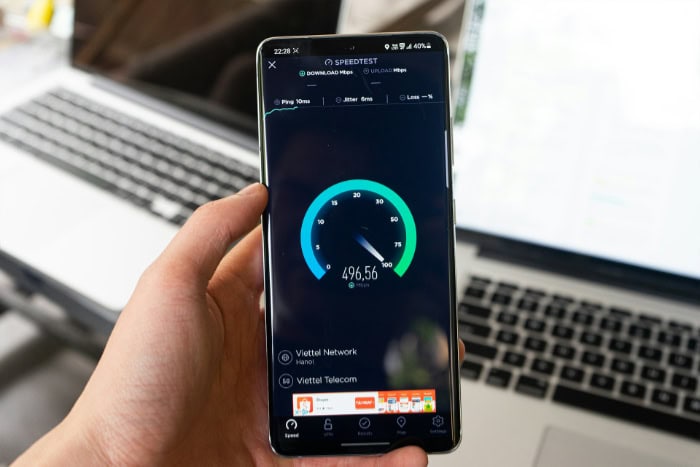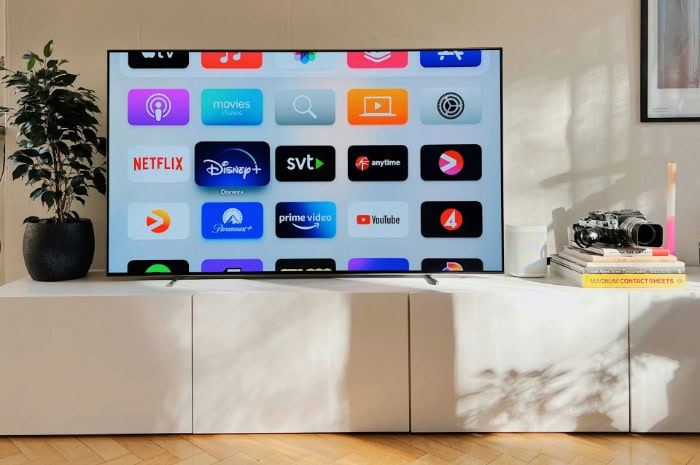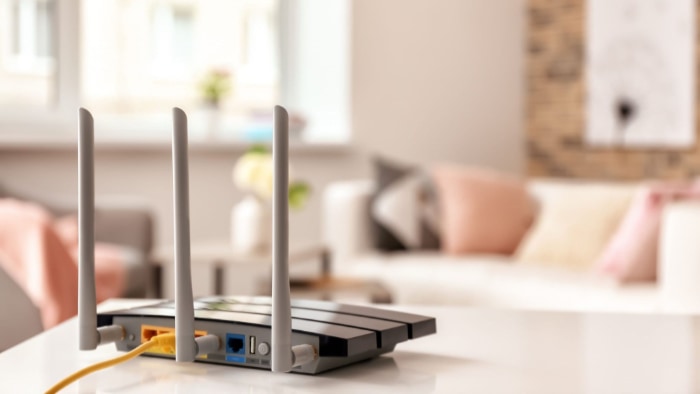How Much Internet Speed Do You Really Need? Simplified

Internet speed plays a crucial role in how smoothly we carry out everyday tasks like streaming, gaming, working, or connecting with loved ones online. Yet, with so many speed tiers and technical terms, figuring out what’s actually needed can feel confusing.
Too little speed might cause frustrating lags, while paying for excessive bandwidth could waste money.
How Internet Speed Works
Having a steady and reliable internet connection is essential for modern-day activities, but the technical jargon around internet speed can sometimes make things seem more complicated than they are.
Knowing the basics of how internet speed works not only helps you understand what you’re paying for but also allows you to match the right service to your unique needs.
Download vs. Upload Speeds Explained
Internet speed is typically divided into two components: download and upload speeds. Download speed refers to how quickly data is delivered from the internet to your device. This is what you rely on for tasks like streaming videos, browsing websites, or downloading large files.
Upload speed, on the other hand, measures how quickly data travels from your device to the internet. This speed is crucial for things like posting videos, sending large email attachments, or participating in video calls.
For most users, download speed is the primary focus when choosing an internet plan since activities like streaming and browsing dominate everyday use. However, upload speed becomes equally important for those who work remotely, stream content online, or share large files regularly.
Understanding the balance between these two speeds can help you prioritize what matters based on how you use the internet.
Measuring Bandwidth in Mbps
Internet speeds are measured in megabits per second (Mbps), where one megabit equals one million bits of data. Think of Mbps as the size of the digital “pipeline” through which your data travels.
A higher Mbps rating means more data can flow to and from your devices in a shorter amount of time.
For example, an internet plan with 50 Mbps download speed will allow you to load webpages and stream videos faster than a plan with 10 Mbps. It’s worth noting that Mbps shouldn’t be confused with megabytes (MB), which measure file sizes.
For reference, 8 megabits equal 1 megabyte, so a 50 Mbps connection can theoretically download a 1 MB file in about 0.16 seconds.
Real-World Speed vs. Advertised Speed
The speed advertised by internet service providers (ISPs) isn’t always what you’ll experience in day-to-day use. Advertised speeds are often the maximum theoretical speeds under ideal conditions, but various factors can impact actual performance.
Network congestion, the quality of your router, and the number of devices connected at once can all slow things down.
Another factor to consider is “throttling,” where some ISPs intentionally reduce speeds during peak usage hours to manage heavy traffic. To get a clearer view of your actual speed, it’s a good idea to use speed-testing tools that measure both download and upload performance.
This way, you can compare your real-world results to the plan you’re paying for.
Impact of Latency and Ping Rates
While speed determines how quickly data is transmitted, latency measures the time it takes for data to make a round trip between your device and the server. This is often referred to as “ping rate” and is measured in milliseconds (ms).
A lower ping rate means faster response times, which is particularly important for activities like online gaming, video conferencing, or live-streaming events, where even slight delays can disrupt the experience.
For example, a ping rate below 50 ms is generally ideal for gaming, while a rate above 100 ms can cause noticeable lags and delays. Latency is often affected by your internet type—fiber-optic connections tend to have lower latency compared to satellite or DSL connections.
By keeping an eye on both speed and latency, you can ensure your connection is not only fast but also responsive, providing a smoother and more enjoyable online experience.
Essential Speed Requirements by Activity

Internet speed needs can vary widely depending on how you use your connection. Activities like checking emails or browsing social media require far less bandwidth than streaming in 4K or engaging in online gaming.
Each task has specific demands, and knowing what those demands are can help ensure your connection is sufficient for a seamless experience.
Basic Web Browsing and Email
Most standard activities like reading articles, sending emails, or scrolling through social media have minimal speed requirements. A connection with download speeds of 1-5 Mbps is usually sufficient for these tasks.
Lightweight activities like these don’t involve transferring large amounts of data, so even slower internet plans can easily keep up.
However, as soon as you add multiple users or devices to the mix, demands can increase. For example, if several devices are connected and streaming background updates or software downloads, even simple activities may slow down.
A plan offering at least 10 Mbps is a comfortable choice for uninterrupted browsing and emailing in a typical household setup.
Streaming Video (HD, 4K, Live Content)
Streaming video is one of the more bandwidth-intensive activities. Watching content in standard definition requires relatively little speed—usually around 3 Mbps.
However, as video quality increases, so do speed requirements. For HD streaming, speeds of at least 5-10 Mbps are recommended, while 4K content demands upwards of 25 Mbps to maintain smooth playback without buffering.
Live-streamed content, such as sports or concerts, can be even more demanding since it requires simultaneous downloading and real-time playback. For live 4K streams, a consistent connection of 30 Mbps or more is often needed.
The quality of your streaming experience can also depend on how many people are sharing the connection. If multiple people are streaming at the same time, it’s wise to opt for a higher-speed plan to avoid disruptions.
Online Gaming and Video Conferencing
Both online gaming and video conferencing require a stable and responsive connection. Gaming depends not only on download speeds (ideally 3-10 Mbps) but also on low latency for real-time communication with game servers.
A higher upload speed of 1-3 Mbps is also important, especially for multiplayer games where sending data quickly is just as critical as receiving it.
Video conferencing, such as Zoom or Microsoft Teams calls, involves two-way data transmission. For smooth video and audio quality, at least 5 Mbps download and upload speeds are recommended.
Higher speeds may be needed for group video calls or HD video options, where 10-15 Mbps ensures a smoother experience. Unstable speeds can result in dropped calls or delays, so a reliable connection is key for stress-free communication.
Cloud Services and File Transfers
Cloud-based activities can be particularly demanding, depending on the size of the files you’re uploading or downloading. For everyday tasks like syncing documents or backing up photos, speeds of around 5 Mbps are generally enough.
However, large file transfers, such as uploading videos or downloading software, require faster connections.
For professionals who work with high-resolution media files or extensive data backups, upload speeds of 10 Mbps or higher are often essential. Download speeds of 50 Mbps or more provide a noticeable improvement when handling massive files.
If cloud services are central to your work or daily routine, investing in higher speeds ensures workflows remain uninterrupted and efficient.
Household Assessment Factors

Choosing the right internet speed isn’t just about individual usage—it’s also about how the entire household interacts with the network. From the number of connected devices to your household’s peak activity hours, several factors directly impact the connection quality and overall experience.
Number of Connected Devices
Modern households are filled with internet-connected devices, including smartphones, laptops, smart TVs, gaming consoles, tablets, and even smart home gadgets like thermostats and security cameras. Each device competes for bandwidth, and the more devices connected at once, the greater the strain on your network.
While some devices use minimal bandwidth in the background, streaming services, gaming systems, and video calls can consume significant amounts of data.
For smaller households with only a few devices, a lower-speed plan might suffice. However, larger families or homes equipped with many smart devices will benefit from higher speeds.
As a general rule, the more devices you have, the higher capacity you’ll need to keep everything running smoothly, especially during busy times.
Simultaneous User Calculation
It’s important to consider how many people in your household will be using the internet at the same time. If one person is streaming videos while another is gaming or attending a video conference, the demands on your network multiply.
Each activity adds to the overall bandwidth usage, and slower speeds can quickly lead to buffering, lag, or dropped connections.
For a household with one or two users engaged in light activities like browsing or streaming in standard definition, a modest plan can handle the load.
However, families with multiple users performing high-bandwidth activities simultaneously—such as streaming 4K videos, gaming, or uploading large files—should opt for an internet plan that offers faster speeds to avoid disruptions.
Peak Usage Times
Internet demands often spike during specific times of the day, referred to as peak usage times. Commonly occurring in the evenings or weekends, these periods coincide with when households are streaming movies, playing online games, or participating in video calls.
Furthermore, neighbors using the same service provider in densely populated areas can add to network congestion, further slowing down speeds during busy times.
If your household tends to use the internet heavily during peak hours, consider a plan with ample bandwidth to meet these higher demands. Consistent speeds during busier periods help maintain a smooth, uninterrupted online experience for everyone in the home.
Common Household Activities Matrix
Household activities vary, and each task carries its own bandwidth requirements. Streaming video, online gaming, working from home, and syncing cloud files are some of the most data-intensive activities, while tasks like social media browsing or sending emails require far less speed.
A household that primarily streams video content while occasionally gaming or working online will have different requirements than one with remote workers uploading large projects or avid gamers.
Assessing the activities most common in your home helps establish a baseline for the speed you’ll need. For example, a household focused on entertainment might prioritize high download speeds, while cloud-based work environments might demand better upload speeds.
The mix of activities within your family directly determines the ideal internet speed to choose.
Common Speed Tiers and Their Uses

Internet speed tiers are often divided into categories based on the level of performance they can support. Each tier is suited to different types of households and activities.
From entry-level plans to high-speed options, understanding what each tier offers can help you determine which one aligns with your needs.
Entry-Level (25-50 Mbps)
Entry-level internet plans, typically ranging from 25 to 50 Mbps, are aimed at smaller households or those with light online usage. This speed tier is ideal for activities like checking emails, browsing websites, and streaming videos in standard or high definition on one or two devices.
It can comfortably accommodate a couple or an individual who doesn’t rely on data-heavy tasks.
While this speed range is suitable for basic needs, it may show limitations when multiple devices are connected or when trying to stream content in 4K. Large file uploads or online gaming might also feel sluggish with entry-level speeds.
For light usage or small living spaces where moderate internet access is sufficient, this tier provides a budget-friendly option.
Mid-Range (100-200 Mbps)
The mid-range speed tier, offering connections between 100 and 200 Mbps, is a popular choice for households with multiple users and devices. This range handles more demanding activities such as streaming 4K content, participating in video calls, and online gaming with ease.
It also supports working from home, where a stable connection is needed for downloading large files or engaging in virtual meetings.
This speed tier is a great fit for medium-sized families or shared living spaces where several people are often online simultaneously.
Whether streaming on multiple TVs, uploading photos to the cloud, or playing graphic-intensive multiplayer games, mid-range speeds provide a balance between performance and cost for those with diverse internet needs.
High-Speed (500+ Mbps)
High-speed plans, offering 500 Mbps or more, are designed for larger households or those with advanced internet demands. This tier is built to handle bandwidth-heavy activities without any noticeable slowdown, even when multiple users are online at the same time.
It supports seamless 4K or 8K streaming, professional-grade workflows involving large file transfers, and downloading or updating games quickly.
This level of speed is also beneficial for those who operate smart homes with many connected devices, such as cameras, appliances, and automated systems.
For families with heavy internet use or individuals who rely on high-speed access for work and entertainment, this tier ensures consistent, lightning-fast performance regardless of the activity.
Optimizing Your Internet Connection

Even with a high-speed internet plan, the performance of your connection can depend on how efficiently your setup is configured. Several factors, such as the placement of your router, the choice between wired and wireless connections, and the tools you use to manage your network, can significantly impact speed and reliability.
Router Placement and Configuration
Your router’s location plays a significant role in the quality of your Wi-Fi signal. Ideally, it should be placed in a central position within your home to ensure even signal distribution.
Walls, furniture, and electronic devices like microwaves can interfere with your connection, so keeping the router away from such obstacles boosts performance. Elevating the router, such as placing it on a shelf, can also enhance signal strength.
Configuration settings also matter. Many modern routers come with dual-band or tri-band capabilities, allowing you to use both 2.4 GHz and 5 GHz frequencies. The 2.4 GHz band provides a wider range and better penetration through walls, while the 5 GHz band offers faster speeds over shorter distances.
Adjusting these settings based on the layout of your home and your usage habits can make a noticeable difference in connection quality.
Wired vs. Wireless Connections
The choice between wired and wireless connections often depends on your specific needs. Wired connections, such as those using Ethernet cables, provide the most stable and fastest performance.
They are ideal for gaming, video conferencing, or streaming in 4K, where reliability and minimal latency are crucial. If possible, consider connecting devices like desktop computers, gaming consoles, or smart TVs directly to the router with a wired connection.
Wireless connections, while more convenient, can face interference and signal drops, especially in larger homes or multi-story buildings. Using Wi-Fi extenders or mesh network systems can help eliminate dead zones and strengthen the wireless signal throughout your home.
Depending on your house layout, combining wired and wireless setups can give you the benefits of both flexibility and speed.
Network Management Tools
Managing your network effectively can prevent overloading and ensure smooth performance across all connected devices. Many modern routers come with built-in software that allows you to monitor device connections, prioritize specific activities, and limit bandwidth usage on less critical tasks.
For example, you might prioritize streaming or online gaming during certain hours while reducing bandwidth allocated to background updates on other devices.
Parental controls and guest networks are additional features that help manage your internet. Parental controls can set restrictions on certain websites or schedule internet access for specific devices.
Guest networks allow visitors to connect to your Wi-Fi without impacting the main network’s performance, keeping your bandwidth usage in check.
Speed Testing Methods
Regular speed tests help you monitor your connection’s performance and identify inconsistencies or downtime. Speed tests measure your download and upload speeds as well as latency, providing insight into how your internet compares to the speeds promised by your service provider.
Testing at different times of the day can show how peak usage hours affect your connection.
To get accurate results, close unnecessary apps and devices before running a test. Tools like Ethernet connections can also be used during tests to rule out Wi-Fi interference.
Popular and reliable speed testing tools include Ookla Speedtest, Fast.com by Netflix, and Google’s built-in speed test, which can be accessed by simply searching “internet speed test” on Google. If you notice significant speed drops, consider troubleshooting your router or contacting your service provider to address potential issues.
Conclusion
Finding the right internet speed for your household begins with evaluating your activities, devices, and the number of users sharing the connection. From light browsing to bandwidth-intensive tasks like 4K streaming or online gaming, matching your needs to the appropriate speed tier is essential for smooth and efficient usage.
Factors like router placement, network configuration, and regular speed tests also play a vital role in maintaining a reliable connection.
A well-optimized internet setup not only enhances performance but also ensures that everyone in your home can stay connected without interruptions. Balancing speed, reliability, and cost helps create a setup that supports your lifestyle with ease, no matter how you use the internet.


